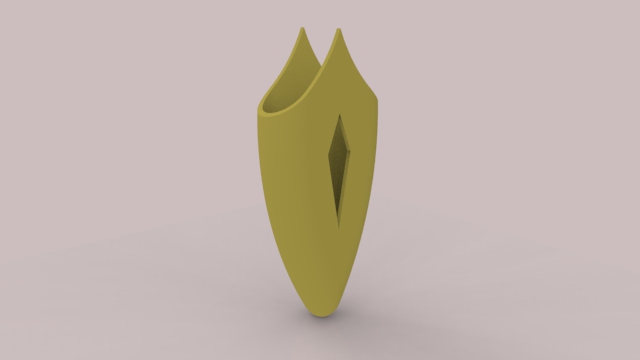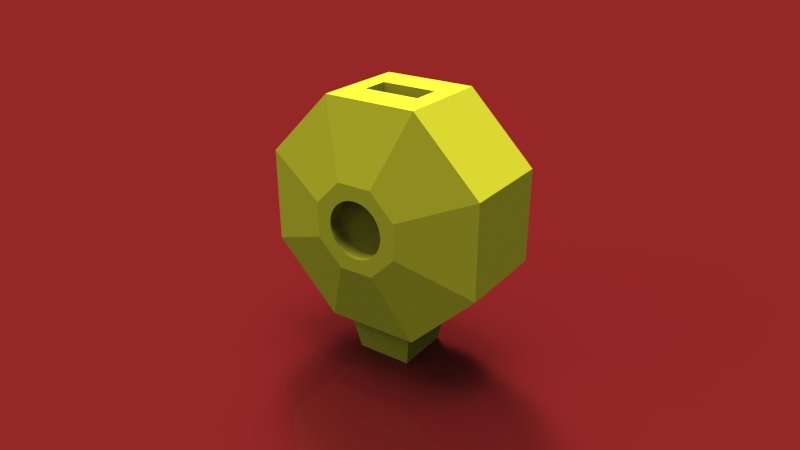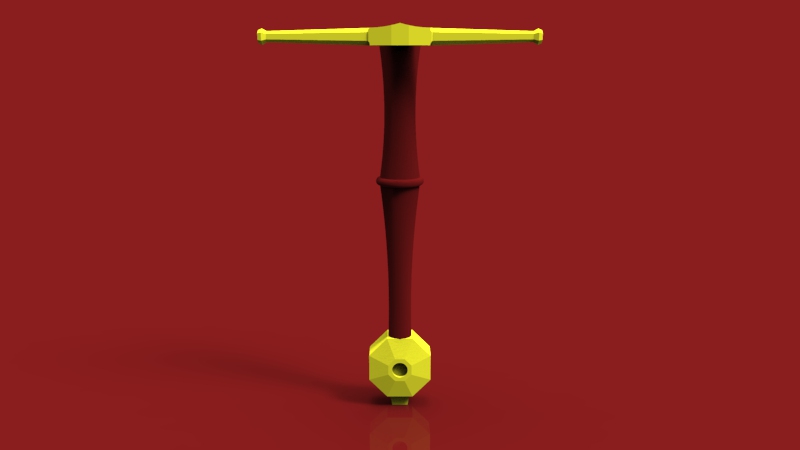| Author |
Message |
|
Christopher B Lellis
Location: Houston, Texas Joined: 01 Dec 2012
Posts: 268
|
 Posted: Mon 03 Jun, 2013 12:20 am Post subject: Design practice items and scabbards with 3D printers Posted: Mon 03 Jun, 2013 12:20 am Post subject: Design practice items and scabbards with 3D printers |
 |
|
The sword community should get in on this. How cool would that be to just print a practice shield or a cheap but functional sword scabbard on the spot?
Of course it couldn't replace works of art like top of the line scabbard makers and sword companies but for cheaper, more expendable stuff, you could print anything from this hobby on these things.
If they can make this kind of stuff the possibilities are endless, especially as the technology and potential improves of 3d printing.



This is not a water gun, that is a real functioning firearm.
Heck you could print off an exact copy of a sword you like and use it to train with. But somebody of course has to put the design on the soft ware first.
|
|
  |
 |
Tom King

|
 Posted: Mon 03 Jun, 2013 1:12 am Post subject: Posted: Mon 03 Jun, 2013 1:12 am Post subject: |
 |
|
For those not well versed in engineering, 3D printing may look like some kind of wonder of modern manufacturing, but in reality it is only useful for it's intended purpose- rapid prototyping. What proponents of 3D printing do not understand or do not wish to be made know, 3D printing is
A. slow- it would take over 4 days to print the "warfairy" AR stock and lower on a decent printer in the 1000-2000 range
B. low tolerance- the average 3D printer is only as accurate as it's nibs diameter, which for most is pretty inaccurate. this is why many printed parts have to be "finished" in some manner (such as acetone) to remove the roughness of the formed part
C. weak- much weaker than traditional cast plastics
D. small- the average work surface of a 3D printer ranges from 3x3x3" to about 18x18x18, with some of these microprinters being in the $300 range and the large, professional units being in the realm of $30-$100,000
E. expensive- the plastic filament is almost $30 per kilogram. the price may go down once a plastic extruder is put on the market, but then the price of store bought filament will go up and the price of ABS pellets will skyrocket (economics 101)
Besides, for the low accuracy, large work surface projects you personally have talked about, a conventional router and jig saw will fit the bill, let alone a mill (cnc or manual); both methods being able to make quick work of woodworking and venturing into steel.
the one use I see for 3D printing in our community is printing wax models of hilt furniture and chapes to use in lost wax casting of latten metals, or to do the same for outsourcing to cast mild steel. Imagine if everyone was able to model their perfect hilt furniture, then print the model and break out the plaster of paris for a new crossguard to an otherwise plane jane production sword? pretty sweet if you ask me, but I'll stick to mill til the price legitimately comes down on the whole tech and i can pick up a decent, prebuilt machine for about 250.
|
|
  |
 |
Tom King

|
 Posted: Mon 03 Jun, 2013 1:47 am Post subject: Posted: Mon 03 Jun, 2013 1:47 am Post subject: |
 |
|
things like this would be good candidates for 3d printing, due to size and the ability to print in wax. Just press print, then break out the crucible and blowtorch. a few hours later, your brand new brass chape is ready or mounting on a scabbard.
 Attachment: 21.23 KB Attachment: 21.23 KB

|
|
  |
 |
|
Christopher B Lellis
Location: Houston, Texas Joined: 01 Dec 2012
Posts: 268
|
 Posted: Mon 03 Jun, 2013 1:54 am Post subject: Posted: Mon 03 Jun, 2013 1:54 am Post subject: |
 |
|
Yeah, exactly.
That's the kind of stuff I'm talking about.
|
|
  |
 |
Mikko Kuusirati

|
 Posted: Mon 03 Jun, 2013 2:01 am Post subject: Posted: Mon 03 Jun, 2013 2:01 am Post subject: |
 |
|
High end industrial printers, capable of far more precise and durable work than the affordable consumer models, also show downright revolutionary promise for customized prosthetics, which is especially significant for young people who are still growing and thus can't fully benefit from conventional mass produced models (and custom ones are way too expensive to be replaced on a yearly basis). Of course, the machinery is orders of magnitude more expensive than home printers, but it's currently being experimented with in a number of hospitals. The materials are also developing rapidly, and you can expect prices to drop fairly steeply in the future.
As it is, with a good (and relatively expensive!) consumer grade printer and the right material you could make things like plastic waster components and wax models for casting, but metals suitable for functional swords really aren't available as of yet. Of course mass production is still much more cost effective, too, but the gap is gradually diminishing towards the point where custom work is not prohibitively expensive for most applications (although it can't ever actually disappear, no matter how far the technology advances, simply due the work needed to design and program a good custom design).
PS. As to the current limitations of the technology, note the broken trigger on the gun... 
"And sin, young man, is when you treat people like things. Including yourself. That's what sin is."
— Terry Pratchett, Carpe Jugulum
|
|
  |
 |
JE Sarge
Industry Professional

|
 Posted: Mon 03 Jun, 2013 3:11 pm Post subject: Posted: Mon 03 Jun, 2013 3:11 pm Post subject: |
 |
|
| Tom King wrote: | | things like this would be good candidates for 3d printing, due to size and the ability to print in wax. Just press print, then break out the crucible and blowtorch. a few hours later, your brand new brass chape is ready or mounting on a scabbard. |
Now this would be nice. Oh, the time it would save! 
J.E. Sarge
Crusader Monk Sword Scabbards and Customizations
www.crusadermonk.com
"But lack of documentation, especially for such early times, is not to be considered as evidence of non-existance." - Ewart Oakeshott
|
|
  |
 |
Tom King

|
 Posted: Mon 03 Jun, 2013 3:36 pm Post subject: Posted: Mon 03 Jun, 2013 3:36 pm Post subject: |
 |
|
| JE Sarge wrote: | Now this would be nice. Oh, the time it would save!  |
If crusader monk ever invests in a 3D printer send me a pm; I'd love the opportunity to see some of my models grace some quality scabbards. After 5 years of doing this stuff I can make basic chapes like that in my sleep (well kind of my sleep- 7min at 4am for the purpose of this thread)
|
|
  |
 |
Tom King

|
 Posted: Mon 03 Jun, 2013 4:37 pm Post subject: Posted: Mon 03 Jun, 2013 4:37 pm Post subject: |
 |
|
Crossguards and pommels are also a possibility when using 3D printing to produce latten castings
just a little something I worked on this afternoon; a basic early "gothic" crossguard and pommel set
 Attachment: 38.06 KB Attachment: 38.06 KB

 Attachment: 36.08 KB Attachment: 36.08 KB

|
|
  |
 |
Tom King

|
 Posted: Mon 03 Jun, 2013 11:45 pm Post subject: Posted: Mon 03 Jun, 2013 11:45 pm Post subject: |
 |
|
damn guys... you got my design bug reignited. So.... who has a 3D printer?
This sword looks like the bastard child of an Albion Regent (the sword I've lusted after forever- inspiration for the blade i'm envisioning and some of the lines of the guard) an Albion Munich (which i got the pleasure of test cutting with a few months back- responsible for the svelte look of the hilt), and a discontinued Darksword Von Eglofstein War Sword (A sword I briefly owned with a design that really appeals to me, but was paired with the build "quality" we know and "love" from our friends at darksword- responsible for the pommel and the crossguard).
 Attachment: 24.61 KB Attachment: 24.61 KB

furniture on quickly drawn up hilt
 Attachment: 18.69 KB Attachment: 18.69 KB

CAD sketch of the blade overlayed on the hilt
XVIIIb blade
|
|
  |
 |
|
|

